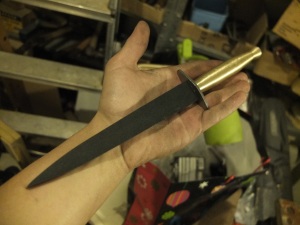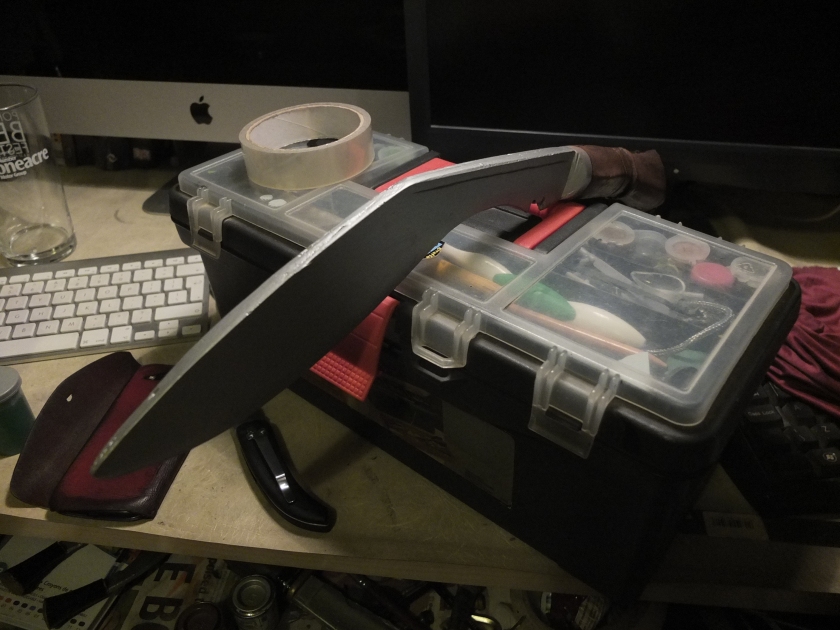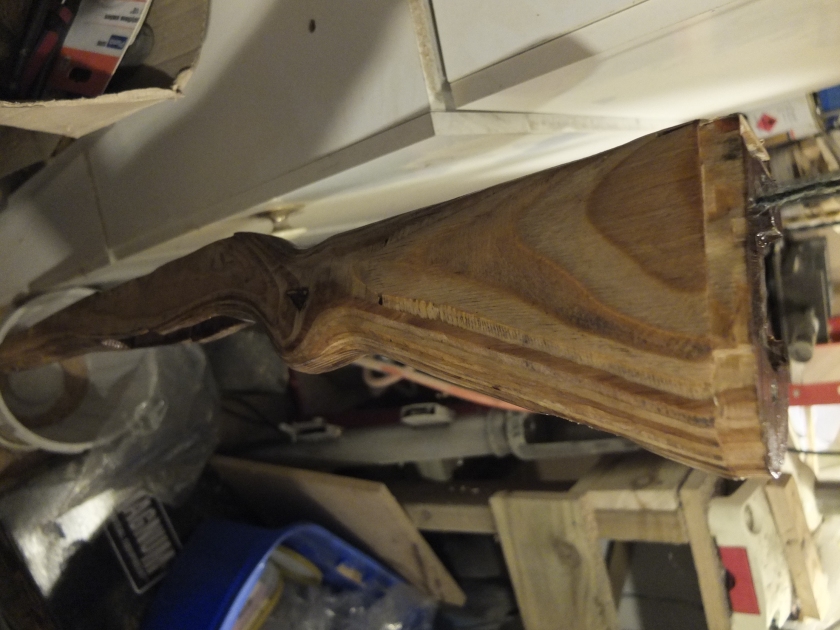I have been experimenting with making replica Fairbairn-Sykes for quite some time now (since my introductory article here in fact). I was fortunate to find a copy of the original design by Fairbairn himself including dimensions.
My first attempt came out quite well:






However at the time I did not have all the lathe tools required to finish the workpiece. There are some very fine private purchase knives that have this smooth finish so I shall leave it much as in this image.
I moved onto my next attempts recently after a long hiatus caused by a broken lathe.
I used the same dimensions as before, though achieved a much higher level of accuracy this time.

I cut two, one in brass, one in steel. This time I was able to drill perfectly central holes all the way through and knurl the outsides. These handles are based on the Second and First pattern knives rather than the more common third pattern, which have deep parallel grooves. As the third pattern would be more work to produce and are readily available I decided to focus on these.

The blade blank was laser cut (as was the hand guard). I then shaped it with the grinding disk and polishing disks to develop the shape. Finally, several grades of sharpening stones put a smooth finish on it. This blade has not been sharpened and has flat profile edges to make it legal to carry for reenacting. This also means that it is slightly thicker overall which is an advantage later on…

The handles are oil blacked. Steel is much easier to black than brass due to the recognisable colour changes that are very distinct. However I only had one blade profile so finished the brass handle first.



The next step is to work on a rubber solution to the very thin blade. Most (all in my experience) rubber F-S knives bend when wielded and this really removes any sense of threat or realism which can ruin immersion in-game.
If you like the look of these blades, drop us a line on enquiries.vintageairsoft@gmail.com to place an order. We can customise the knife to your preferences and provide them sharpened or unsharpened.
You can also find us on Facebook. Don’t forget to follow the blog and get updates straight to your inbox!






























